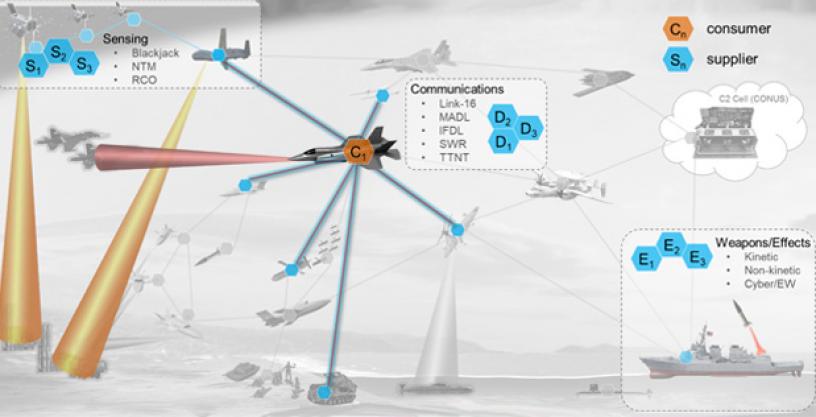Summary

The goal of the Adapting Cross-Domain Kill-Webs (ACK) program is to provide a decision aid for mission commanders to assist them with rapidly identifying and selecting options for tasking – and retasking – assets within and across organizational boundaries.
Specifically, ACK will assist users with selecting sensors, effectors, and support elements across military domains (space, air, land, surface, subsurface, and cyber) that span the different military Services to deliver desired effects on targets. Instead of limited, monolithic, pre-defined kill chains, these more disaggregated forces can be used to formulate adaptive “kill webs” based on all of the options available.
There are three major challenges to realizing the ACK goals. First, during execution, mission commanders have little or no insight into what capabilities are available across domains and what capacity or quality of service other domains may be able to offer. Second, each domain has its own set of authorities and missions they are tasked to service, making it challenging to assess meaningful tradeoffs of the “value” or “cost” of supporting new missions originating from another domain versus their own current set of missions. Third, given a set of diverse cross-domain kill web options, decision-makers need a way to compare them rapidly and select the “best” option. The ACK program is leveraging commercially developed solutions adapted from e-commerce and is modifying them to help address these challenges.
These algorithms are then combined with a “Virtual Liaison” service abstraction from a much larger “Capability Marketplace” to enable decentralized Joint All-Domain adaptation. The program is currently investigating the right bid and offer language necessary between consumers and suppliers in the marketplace along with evaluating the relative merits of the different technical approaches. These include assessing the processing and bandwidth requirements along with characterizing any limitations with respect to marketplace size (relative and absolute numbers of consumers, suppliers, constraints, etc), Virtual Liaison architectural representation, and planning horizon.
ACK will enable multiple warfighters to define distributed effects and adapt them at combat speed using a shared set of resources. This will increase lethality and capitalize on latent capacity within the existing warfighting force structure by pairing the right sensor and weapon together for a given target and operational problem. This will also create greater resilience by enabling rapid substitutions if a capability is lost and will make the current force more efficient by enabling better sharing of resources across domains to balance tasking loads.
Finally, the tools developed in ACK will aid with the protection of sensitive capabilities by allowing capability providers (suppliers) to offer assets across domains in terms of the effects they can provide, without exposing details regarding how those effects will be achieved (i.e. without revealing sources and methods). If the program is successful, the technology developed under ACK will be an important enabler for the new Joint All-Domain concepts that the Services are pursuing at both operational and tactical levels.
Office
Strategic Technology OfficeThis program is now complete.
This content is available for reference purposes. This page is no longer maintained.
